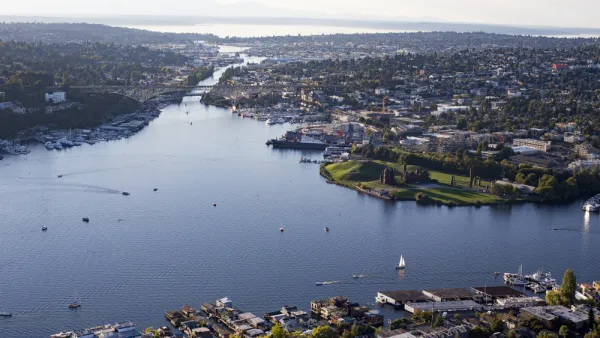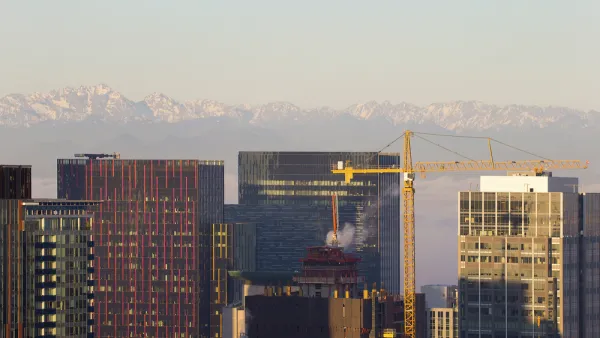The Seattle 2035 will manage growth for one of the fastest growing cities in the country. But shouldn't it also mitigate the greenhouse gas emissions of this famously eco-conscious city?
Josh Feit reviews the current options under consideration for Seattle's ongoing comprehensive planning process. Seattle 2035, as the comprehensive plan is currently called, will lay out the city's planning agenda over the next 20 years—a period when the city is expected to add 120,000 new residents, 115,000 new jobs, and 70,000 new units.
Feit details each of the four conceptual options currently under consideration for the plan (i.e., urban villages, urban centers, transit oriented urban villages around light rail, and transit oriented urban villages around light rail and major bus hubs) and the engagement and feedback at a recent public hearing on the plan.
Feit, concludes, however, with a strong critique of the plan's lack of ambition in reducing greenhouse gas emissions. According to the consultants leading the public hearing, the plan would achieve small reductions in greenhouse gas emissions. Feit's response to such a low bar:
"Growth management is precisely about fighting global warming. Yes, with 120,000 new people and 70,000 new units, Seattle’s carbon footprint, would, mismanaged, increase. And a slight decline with so much growth might be seen as progress. But coordinating new density is actually an opportunity to transform our city into a bulwark against climate change. By seizing growth as a catalyst for transit oriented development built around urbanist and pedestrian values, Seattle could actually be facing a cure for wasteful GHG emissions. Growth induces efficiency."
FULL STORY: City Overlooking Opportunity to Fight Global Warming

National Parks Layoffs Will Cause Communities to Lose Billions
Thousands of essential park workers were laid off this week, just before the busy spring break season.

Retro-silient?: America’s First “Eco-burb,” The Woodlands Turns 50
A master-planned community north of Houston offers lessons on green infrastructure and resilient design, but falls short of its founder’s lofty affordability and walkability goals.

Delivering for America Plan Will Downgrade Mail Service in at Least 49.5 Percent of Zip Codes
Republican and Democrat lawmakers criticize the plan for its disproportionate negative impact on rural communities.

Test News Post 1
This is a summary

Test News Headline 46
Test for the image on the front page.

Balancing Bombs and Butterflies: How the National Guard Protects a Rare Species
The National Guard at Fort Indiantown Gap uses GIS technology and land management strategies to balance military training with conservation efforts, ensuring the survival of the rare eastern regal fritillary butterfly.
Urban Design for Planners 1: Software Tools
This six-course series explores essential urban design concepts using open source software and equips planners with the tools they need to participate fully in the urban design process.
Planning for Universal Design
Learn the tools for implementing Universal Design in planning regulations.
EMC Planning Group, Inc.
Planetizen
Planetizen
Mpact (formerly Rail~Volution)
Great Falls Development Authority, Inc.
HUDs Office of Policy Development and Research
NYU Wagner Graduate School of Public Service




























